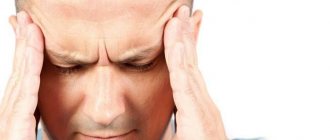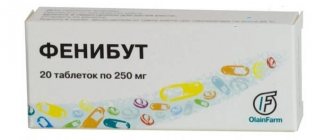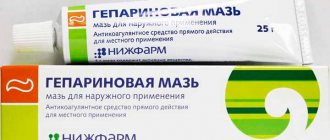What nootropic drugs are considered the most famous and widely used in medical practice? What nootropics are commonly used for children, the elderly, for psychoneurological disorders and healthy individuals to stimulate mental activity? We addressed these questions to the Chief Doctor of the Multidisciplinary Medical Center, psychiatrist, psychiatrist-narcologist and psychotherapist Vladislav Sipovich.
Action of phenibut
It has several different effects on the nervous system and mental state:
- Reducing anxiety and fear.
- Normalization of sleep, making it easier to fall asleep.
- Nootropic effect: by improving the metabolism of nerve cells, attention, memory and reaction speed are improved.
- Relieves symptoms of dizziness, stuttering, enuresis and tics in children.
- Anticonvulsant action.
- Analgesic effect.
- Improves endurance.
The mechanism of action is complex and is associated with a direct effect on GABA receptors, which leads to increased inhibition processes caused by gamma-aminobutyric acid.
Also, by improving blood microcirculation in the small vessels of the brain and reducing the processes of lipid peroxidation, it helps restore normal metabolism of nerve cells (neurons). Thus, it combines the effect of a tranquilizer (sedative) and a nootropic-vascular drug.
Cost of medicines and basic analogues
The cost of Phenibut is in the high price segment, as well as its foreign analogues and generics. Domestic similar medications of Phenibut are much cheaper.
| Name of the drug and its analogues | Dosage of the main component (mg) | Quantity in 1 package | Cost in rubles |
| Phenibut | 250 | 20 | 972-1000 |
| Afobazole | 10 | 60 | 532-550 |
| Omaron | 25+400 | 60 | 336-400 |
| Glycine | 100 300 | 50 20 | 181-200 171-198 |
| Noofen | 250 | 20 | 2996-3000 |
| Noobut | 250 | 20 | 470-530 |
| Lutsetam | 400 800 1200 | 60 30 20 | 441-500 568-600 684-710 |
| Ceraxon solution | 1000 1000 | 20 5 ampoules of 4 ml | 3357-3364 1830-1900 |
| Anvifen | 250 | 20 | 378-400 |
| Biotropil | 1200 | 20 | 549-600 |
| Nootropil solution | 800 1200 20% | 30 20 12/5 ml | 364-400 523-550 729-740 |
| Cavinton solution | 5 10 10 | 50 20 10/2 ml | 1029-1045 1224-1250 1311-1320 |
| Cortexin | solution | 10 | 1625-1670 |
Indications for use
Phenibut is prescribed for both disease and non-painful conditions.
- Stress, overwork, lack of sleep, preparation for physical and mental stress and operations.
- Asthenia (asthenic syndrome, neurasthenia, VSD, astheno-neurotic state).
- Tension headache.
- Anxiety disorders: panic attacks, generalized anxiety disorder, phobias (fears).
- Neuroses, neurosis-like states.
- Personality disorders.
- Consequences of organic damage to the nervous system.
- Withdrawal state due to alcohol, drug addiction, smoking.
- Dizziness, Meniere's disease, motion sickness.
- Insomnia.
- Psychosomatic diseases.
- In children: stuttering, tics, enuresis, aggressiveness, developmental delay.
A prerequisite for taking phenibut is a doctor's prescription. Self-use is prohibited!
Introduction
Phenibut is a nootropic drug whose main active substance is aminophenylbutyric acid. It is an anti-anxiety agent, reduces anxiety, fear, improves sleep, increases brain activity and memory. It is fast-acting and has a long-lasting effect. In most cases, Phenibut is sold as prescribed by a doctor.
Let's figure out what can be replaced?
Analogues of the drug are products in which the main active substance is aminophenylbutyric acid. Substitutes are nootropic drugs that have similar pharmacological effects and similar indications for use.
Some medications are sold only with a doctor's prescription, but there are also over-the-counter analogues. The products are presented in various forms of release - tablets, capsules, powders. In Russia, drugs are not prohibited.
Phenibut addiction
With prolonged, uncontrolled use of phenibut, mental and physical dependence may develop. This may require special treatment from a psychiatrist-narcologist and subsequent rehabilitation. As a rule, cases of dependence on phenibut were observed in persons dependent on psychoactive substances who had a long history of drug addiction and who switched from using the drug to phenibut. The development of primary dependence on phenibut only after long-term use is extremely rare.
Contraindications
Phenibut is contraindicated during pregnancy
Despite the positive effect on the body and an impressive list of indications, the use of Phenibut may be limited. So, it is contraindicated in the following cases:
- individual sensitivity or intolerance to the components of the drug;
- pregnancy and breastfeeding;
- liver failure;
- erosions and ulcers of the gastrointestinal tract.
Drug substitutes for children
There are generics of Phenibut on the pharmacological market, which are often used in the treatment of children.
Noofen
Noofen is a nootropic medication that is prescribed as a psychostimulant. The main component of the medicine is phenibut.
The drug has the following properties:
- tranquilizing and stimulating neuronal activity;
- antihypoxic and antiamnestic.
Characteristics of the drug
The medication also improves the child’s intellectual ability, improves his performance, relieves mental stress and eliminates fears and anxiety.
Noofen is effectively used in the treatment of such pathologies:
- emotional overexcitation;
- decreased memory and attentiveness;
- low intellectual development;
- asthenic and neurotic anxiety state;
- neuroses;
- psychopathy;
- anxiety, causeless worry and a feeling of fear;
- childhood enuresis and stuttering;
- insomnia in old age;
- alcohol syndrome;
- dysfunction of the vestibular apparatus
- climacteric disorders in women.
Psychopathy
It is prohibited to prescribe Noofen for the following reasons:
- kidney failure;
- hypersensitivity to the composition of the drug;
- children under 8 years old;
- lactation period.
The drug can be used as part of a combination treatment with tranquilizers and antipsychotics. Adults are prescribed a dosage of 250-500 mg per day, maximum 750 mg. Children over 8 years old – no more than 500 mg per day. Therapeutic treatment continues for 3-6 weeks.
Negative effects occur infrequently in patients and are manifested by the following symptoms:
- urticaria and anaphylactic reactions;
- respiratory tract pathologies – laryngeal edema;
- dyspepsia;
- headache.
Noobut
Noobut is a generic version of Phenibut with the active ingredient - phenibut. The drug belongs to the pharmacological group of nootropic medications. In terms of its properties, Noobut is identical to Noofen and Phenibut, and also has the same purposes as them:
- decreased quality of sleep – insomnia;
- to increase emotional and intellectual activity;
- decreased memory and attention;
- a state of anxiety, causeless anxiety and fear;
- childhood nervous pathologies - tics, stuttering and nocturnal enuresis;
- problem of falling asleep in elderly patients.
The drug is also prescribed as part of the complex treatment of cervical osteochondrosis. Noobut is used as part of preventive measures for seasickness or motion sickness in transport, for vestibular disorders.
Osteochondrosis of the cervical spine
Noobut should not be prescribed to children under 3 years of age, as well as in cases of renal failure and allergies to the ingredients in the medication. During lactation, it is necessary to transfer the newborn to artificial feeding, and only then begin therapy. For pregnant women, medication can only be prescribed by a doctor based on vital signs.
For adult patients and children older than 11 years, these dosages are 250-500 mg three times a day. Children's dosages depend on the age of the children:
- 3-4 years – 2 times a day, 0.1 mg;
- 5-6 years – three times 0.1 mg;
- 7-11 years - twice 0.2 mg.
The duration of taking the tablets is 21-45 days. Preventive measures for motion sickness - take 250-500 mg of medication an hour before the trip. To relieve alcohol syndrome, the initial dosage is 750 mg, followed by a decrease. Side effects of Noobut are identical to those of Noofen.
Lutsetam
Lucetam is produced in tablets and in a solution for injections based on piracetam. A Phenibut substitute is prescribed for the treatment of the following diseases:
- psychoorganic syndrome;
- disorders and behavioral disorders;
- decreased concentration and memory;
- deviations in movement coordination;
- emotional overexcitation;
- dementia and Alzheimer's disease;
- dizziness;
- alcohol syndrome;
- myoclonus of cortical etiology;
- poor learning ability of schoolchildren;
- post-traumatic period (head and brain injury).
Psychoorganic syndrome
Also prescribed after an ischemic stroke to restore the functioning of the motor and speech apparatus, as well as enhance mental and emotional activity.
Lutsetam is not prescribed under the following circumstances:
- hemorrhagic stroke;
- allergy to medicinal components in the medicine;
- kidney failure;
- breastfeeding a newborn;
- the entire period of pregnancy.
Tablets should be taken with meals - 2-4 times a day. To prevent sleep rhythm disturbances, the last intake procedure should be no later than 5 pm.
When treating intellectual disabilities, the medication is taken 2-3 times a day. Dosage per day – 2400-4800 mg. For cortical disorders - the initial dosage in therapy is 7200 mg, and there is a gradual increase by 4800 mg every 3 days until a maximum dosage of 24000 mg is reached. After achieving a therapeutic effect, it is necessary to gradually reduce the dosage by 1200 mg every 2 days.
Negative effects from taking Lucetam:
- headaches, fluctuations in blood pressure index and dizziness;
- insomnia or drowsiness;
- dyspepsia;
- epileptic seizures and impaired coordination;
- irritability and nervousness;
- weight gain;
- increased libido;
- hallucinations, depression.
Similar remedies in other forms
Similar drugs Phenibut can be produced in several dosage forms - tablets, oral or injectable solutions.
Nootropil
Nootropil is produced in a solution for drip administration, capsules, a solution for injections and tablets. Nootropil contains piracetam, which provides the drug with nootropic properties.
Effect of the drug
The medication is prescribed in the following cases:
- coma of toxic or post-traumatic etiology;
- a sharp decrease in memory quality;
- severe dizziness;
- unsteadiness of gait and disturbances in coordination of movement;
- decreased attention and intellectual abilities;
- Alzheimer's disease;
- alcohol dependence in the chronic stage;
- sickle cell anemia;
- myoclonus of cortical type;
- condition after ischemic stroke.
Nootropil is not used in patients with kidney dysfunction, with hypersensitivity to the composition, as well as during lactation and children under 12 months. It is strictly forbidden to use after a cerebral hemorrhage.
Nootropil is prescribed with great caution during pregnancy.
The daily dosage of Nootropil is divided into 2-3 doses:
- psychoorganic disorders – 2400-4800 mg;
- treatment of dizziness – 2400-4800 mg;
- myoclonus - initial dosage 7200 mg and every 2-3 days increase by 4800 mg until reaching 24000 mg;
- dyslexia in a child older than 8 years – 3200 mg per day.
Adverse reactions:
- hallucinations and asthenia;
- increased irritability and overexcitement;
- manifestation of epilepsy;
- depression;
- drowsiness and lethargy;
- dyspepsia;
- skin allergies.
Cavinton
Cavinton is a vasodilator of cerebrovascular pathologies. The drug is an analogue of Phenibut based on vinpocetine and restores human brain activity. Cavinton improves the flow of blood into the cerebral arteries, which increases the delivery of oxygen to neurons.
The medication does not affect myocardial activity or blood pressure. The drug is prescribed for the treatment of the following cerebral disorders:
- memory loss and a sharp decrease in intellectual abilities;
- transient ischemic attacks;
- encephalopathy;
- cephalgia;
- tinnitus.
Properties of the drug and dosage
The drug is not prescribed to patients with the following concomitant pathologies:
- cardiac arrhythmia;
- unstable pressure index;
- severe kidney pathologies;
- lactation and pregnancy.
For treatment, 1-2 tablets are prescribed three times a day. For maintenance treatment – 1 tablet also 3 times a day. The first therapeutic effect can be felt 7-14 days after the start of treatment. The solution is administered only using a dropper - 1 ampoule per 0.5 liter of sodium chloride once a day, and in case of severe pathologies the frequency of procedures is increased up to 3 times.
For children, the medication is administered by drip – Cavinton is diluted in a glucose solution. Therapeutic treatment lasts 2-3 weeks, and after intravenous treatment the patient is transferred to taking tablets.
Negative actions of Cavinton:
- arrhythmia and blood pressure fluctuations;
- dizziness and severe pain in the head in different locations;
- increased body fatigue;
- dyspepsia;
- skin allergy.
Cortexin
Cortexin is a nootropic with cerebroprotective effects and anticonvulsant effect based on Cortexin.
The medication is used in the treatment of such pathologies:
- viral neuroinfection;
- insufficiency of cerebral blood flow;
- transient ischemic attacks;
- brain injury;
- encephalopathy and encephalomyelitis;
- cerebral ischemia;
- asthenic syndrome;
- epilepsy;
- encephalitis;
- Cerebral palsy and developmental disorders in children;
- decreased memory and intelligence;
- autonomic disorders;
- delayed development of the child’s speech apparatus.
Properties of Cortexin
It is not recommended to take Cortexin during pregnancy and lactation, as well as if you are allergic to the components of the medication.
Cortexin solution is administered intramuscularly every day once a day for 10-15 days. The solution is diluted with sodium chloride or lidocaine (procaine). The daily permissible dosage for an adult is 10 mg, and for children weighing less than 20 kg - 0.5 mg per kilogram of the child’s weight. After six months, the course of treatment can be repeated.
For the treatment of stroke, 10 mg of Cortexin must be administered twice a day for 10 days. If necessary, the course is repeated.
Adverse reactions to Cortexin are quite rare, and patients report allergic reactions on the skin in the form of rash, hives, itching and redness at the injection site.






